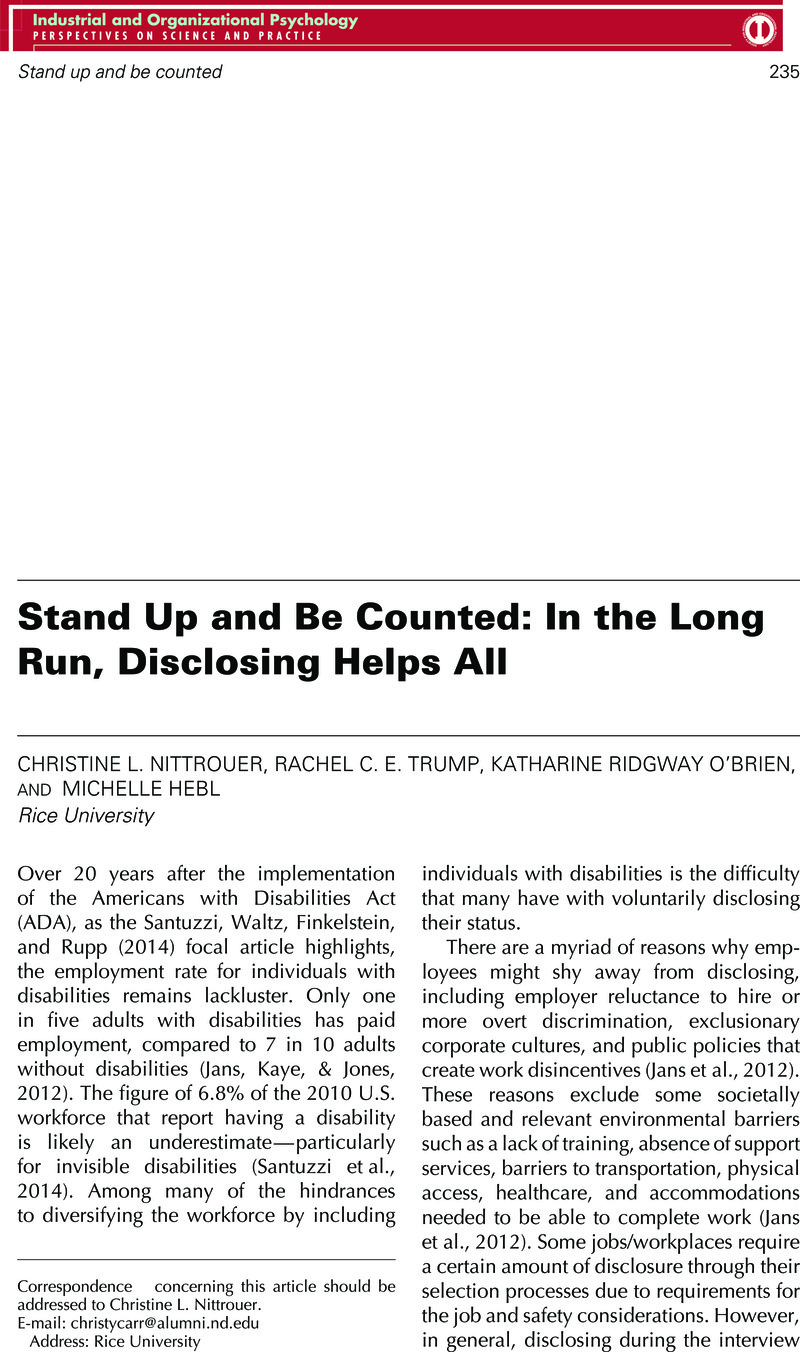Crossref Citations
This article has been cited by the following publications. This list is generated based on data provided by Crossref.
Berkley, Robyn A.
Beard, Roxanne
and
Daus, Catherine S.
2019.
The emotional context of disclosing a concealable stigmatized identity: A conceptual model.
Human Resource Management Review,
Vol. 29,
Issue. 3,
p.
428.
Bonaccio, Silvia
Connelly, Catherine E.
Gellatly, Ian R.
Jetha, Arif
and
Martin Ginis, Kathleen A.
2020.
The Participation of People with Disabilities in the Workplace Across the Employment Cycle: Employer Concerns and Research Evidence.
Journal of Business and Psychology,
Vol. 35,
Issue. 2,
p.
135.
Follmer, Kayla B.
and
Jones, Kisha S.
2021.
It’s not what you do, it’s why you do it: Motives for disclosure and concealment decisions among employees with depression.
Journal of Applied Social Psychology,
Vol. 51,
Issue. 10,
p.
1013.
Mallory, Drew B.
2021.
Trumped: a case study and critical reflections on the threats of unweighted positivity and external context to appreciative inquiry-led participative action research.
European Journal of Work and Organizational Psychology,
Vol. 30,
Issue. 3,
p.
363.
El-Chaarani, Hani
Jneid, Chérine
and
El Nemar, Sam
2022.
Mainstreaming Diversity, Equity, and Inclusion as Future Workplace Ethics.
p.
49.





